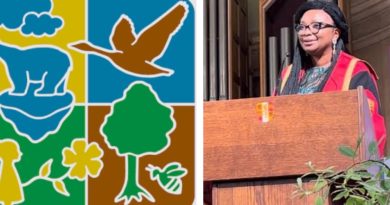Constant Learning Increases Creativity
Innovation is usually the result of connections of past experience. But if you have the same experiences as everybody else, you’re unlikely to look in a different direction.
Highly creative people don’t have special abilities. But, many of them naturally do what others have to train to do.
And, training to be creative begins with constant learning.
Creativity operates in the same way that learning does: through association. When we retain information—when the learning gets stored in long-term memory so we have access to it later—it happens, in the of words Nobel-prize-winner Eric Kandel, “by attending to the information and associating it meaningfully and systematically with knowledge already well established in memory.”
The associative process is the same thing that leads to a creative act: a creative act occurs when two disparate ideas stored in memory become associated. The larger the bank of information someone has to draw from, the greater the chance they’ll be able to create new and useful ideas.
The creative act often seems to come out of nowhere; it feels like it suddenly happens. But, even though it happens in a moment, it’s the result of a lifetime of collected experience and knowledge. As one of the inventors of the laser Gordon Gould put it: “[T]he whole thing…suddenly popped into my head and I saw how to build the laser…but that flash of insight required the 20 years of work I had done in physics and optics to put all of the bricks of that invention in there.”
But, the way most people learn—the way we’re taught to learn in school—doesn’t facilitate the creative use of the information we learn. Ken Robinson, an expert on school reform, writes, “The academic curriculum values two abilities above all others: a particular sort of critical analysis and short-term memory.”
Both of these valued abilities treat learning in a way that it’s used for something specific: to answer questions related to a specific test in a specific class within a specific field.
This type of learning doesn’t encourage disparate associations that result in creative solutions. Instead, it encourages a type of knowledge acquisition that favors keeping disparate domains of knowledge separate in memory instead of encouraging connections between them. The typical education creates individuals with a well-rounded education who aren’t taught to apply their learnings in a well-rounded—creative—way.
The best way to develop the skill of associating disparate ideas—the foundation of creativity—is through continually practicing what I like to call linking when I teach creativity workshops.
Linking involves two steps.
The first step is to pick a subject that you have a passion for. Ideally, this is something you don’t know a lot about—it has the potential to provide a lot of new information to work with. The reason it is important for it to be something you have a passion for is twofold: First, if you’re passionate about it, you’re more likely to invest the time to learn about it. Second, as Carl Jung notes, “The creation of something new is not accomplished by the intellect, but by the play instinct acting from inner necessity. The creative mind plays with the object it loves.”
In other words, things that we are passionate about—what we love—are more likely to create associations naturally.
The second step is to get a book on the subject and take notes—ideally by hand as taking notes by hand increases retention and the depth of learning. But, don’t just take notes from the book: On the right-hand page, take notes from the book. On the left-hand page takes notes about how those ideas relate to other things you already know. In doing so you’re taking the time to make active associations between ideas in your memory.
By constantly learning and repeating this process for everything you read, you’ll build a network of associations between ideas in your memory and increase the chance that when you’re trying to solve a problem, you’ll trigger an association and have a creative solution.
Learning alone won’t make you creative. But, you can’t do it without it.
Reference:
Eric Kandel, In Search of Memory: The Emergence of a New Science of Mind, 2007. ↩
Scott Berkun, The Myths of Innovation. 2007. ↩
Ken Robinson, Out of Our Minds: Learning to Be Creative, 2001. ↩
Carl Gustav Jung, The Collected Works of C.G. Jung, Vol. 6: Psychological Types, 1971. ↩
Pam A. Mueller and Daniel M. Oppenheimer, “The Pen Is Mightier Than the Keyboard: Advantages of Longhand Over Laptop Note Taking,” Psychological Science, 2014. ↩
(Cult Branding)




